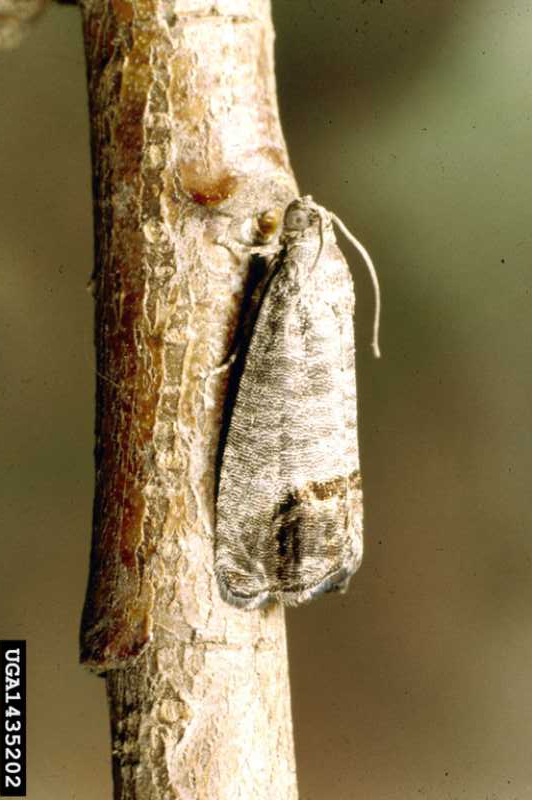 Pheromones and Insect Management - May 30, 2012 Jeff Schalau, Agent, Agriculture & Natural Resources University of Arizona Cooperative Extension, Yavapai County Insects communicate by sound, chemicals, and some even use flashes of light. They do this for several reasons: to find a mate; to direct others to food and other resources; to regulate their distribution; to warn others of danger; to mimic or deceive, and probably for some reasons we have yet to discover. Chemical signals have been studied by entomologists and chemists and are often used in the management of insects we consider pests. Chemical compounds insects use to communicate are called pheromones. Pheromone use in insect management is environmentally friendly and widely used in organic crop production, forestry, structural and stored food, and exotic pest management. They are non-toxic, biodegradable chemicals that are used to change behavior of specific insects and have no effect on other insects and non-target organisms. The use of pheromones in insect management begins with the discovery of a pheromone that alters feeding or mating behavior. Entomologists working with other scientists isolate specific pheromones and chemists determine how to replicate and commercially produce them. Insect antennae are receptors that sense the presence of pheromones in the environment. The persistence of individual pheromone signals varies from a very short time to several days. Long-lasting pheromones are used by insects to mark territorial boundaries or food sources. Short-lived pheromones provide an immediate message, such as a short-term warning of danger or a brief period of reproductive readiness. An example of a pheromone induced behavior you may have observed is the aggregation of ladybird beetles on mountaintops during the summer months. They are responding to an aggregation pheromone and do this to escape the heat and stay together. Ants also use pheromones to trail each other. The next time you see an ant trail in your kitchen, take a damp, soapy sponge, wipe it across the ant trail and observe them as they try to reestablish their bearings. There are three main uses of pheromones in insect management. The most common application is for monitoring insect populations to determine if they are present or absent in an area or to determine if enough insects are present to warrant an insecticide treatment. This monitoring function is the keystone of integrated pest management (IPM). Monitoring is used extensively in urban pest control of cockroaches, in the management of stored grain pests in warehouses or distribution centers, and to track the worldwide spread of exotic pests such as the medfly, Asian longhorn beetle, emerald ash borer, and others. Pheromone traps are currently used to monitor the movement of exotic insect pests in most major North American ports of entry. A second major use of pheromones is to mass trap insects with the intent to remove large numbers of insects from the breeding and feeding population. Massive reductions in the population density of pest insects ultimately help to protect resources such as food or fiber for human use. Mass trapping has been explored with pine bark beetles and has resulted in millions of insects attracted specifically into traps and away from trees. Pheromone trapping has been somewhat successful in controlling codling moths in apples and pears. The third method seeks to confuse the insects during mating to reduce future populations and is called mating disruption. This is commonly used for codling moth management and is applied through small coated wire "twist ties" or a gel impregnated with the pheromone in strategic locations throughout apple and pear orchards. A newer technology uses spray cans that are timed to go off at dawn and dusk, the time of peak activity for codling moths. Each puff of spray releases the equivalent of 10,000 female moths causing the male moths to frantically fly every which way thinking they’ve located a receptive female. The ultimate benefit of using pheromones in insect management is that they are non-toxic to the insects, non-target organisms, and environment. This makes them safe to use and helps growers to better time the use of other pesticides thereby reducing the amounts of pesticides applied. Follow the Backyard Gardener on Twitter – use the link below. If you have other gardening questions, call the Master Gardener help line in the Camp Verde office at 928-554-8999 Ext. 3 or e-mail us at cottonwoodmg@yahoo.com and be sure to include your name, address and phone number. Find past Backyard Gardener columns or provide feedback at the Backyard Gardener web site: http://cals.arizona.edu/yavapai/anr/hort/byg/. |